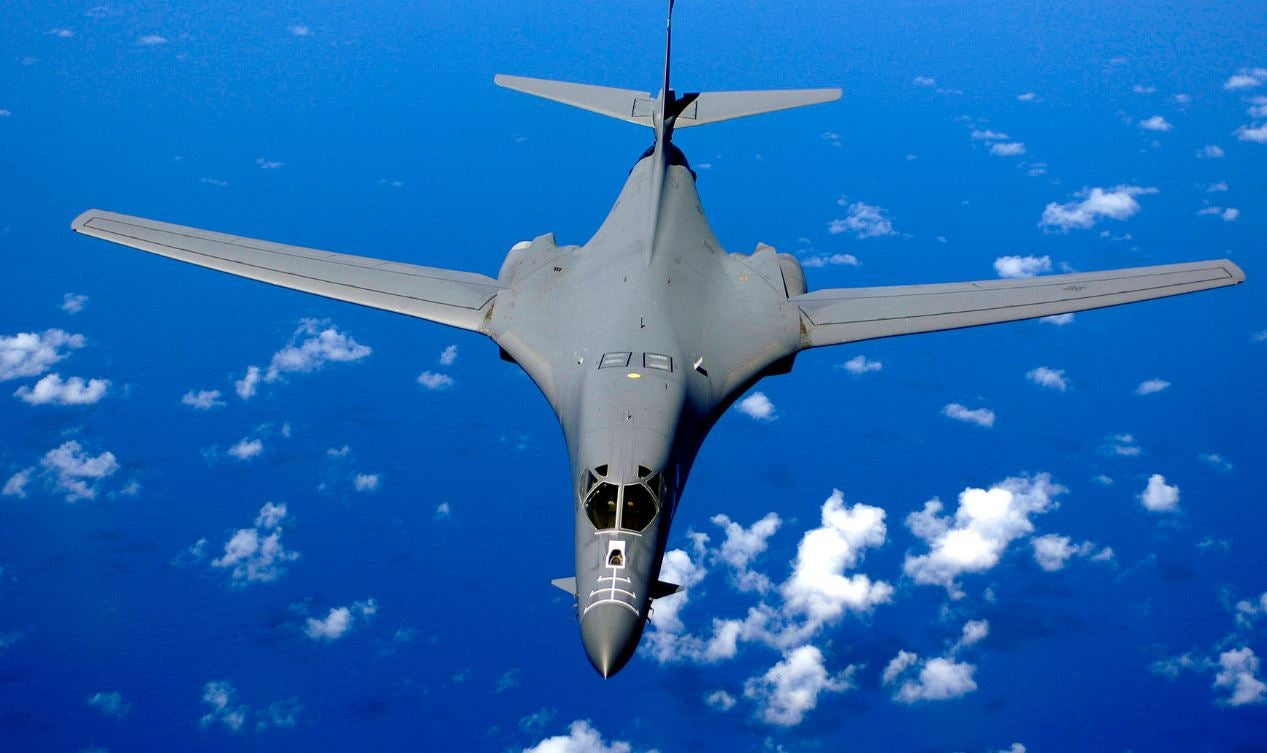US flies two supersonic bombers over the Korean Peninsula days after North's ballistic missile test
The warplanes were joined by fighters from both South Korea and Japan

A pair of US supersonic bombers have flown over the Korean Peninsula, less than 48-hours after North Korea’s successfully tested an intercontinental ballistic missile (ICBM).
Flanked by South Korean fighter jets The B-1 bombers carried out a low-pass over the Osan Air Base, near South Korea's capital Seoul.
The military aircraft took off from the Andersen Air Force Base in Guam and flew to Japanese airspace where they were joined by Japanese F-2 fighter jets, the US Pacific Air Forces said in a statement. They then returned to base.
The US Missile Defense Agency also said a Terminal High Altitude Area Defense, or THAAD, system located in Kodiak, Alaska, was successfully tested on Saturday night, Alaska time.
It said that a medium-range ballistic missile was air-launched over the Pacific, and that the THAAD system detected, tracked and intercepted the target, the Associated Press has reported.
US officials have refused to rule out a tough military response to the Democratic People’s Republic of Korea.
“North Korea remains the most urgent threat to regional stability,” General Terrence J O’Shaughnessy, Pacific Air Forces commander said. “Diplomacy remains the lead. However, we have a responsibility to our allies and our nation to showcase our unwavering commitment while planning for the worst-case scenario.”
He added: ”If called upon, we are ready to respond with rapid, lethal, and overwhelming force at a time and place of our choosing.”
The military said the exercise was a direct response to the ICBM tests. The aircrews "practised intercept and formation training" during the 10-hour mission, according to NBC News.
Analysts said that flight data from North Korea’s second ICBM test showed that a larger part of the US mainland is now in range of the missiles. Experts said the weapons had the capability to hit Alaska.
North Korea's Kim Jong-un claimed the ICBM test was a "stern warning" to US President Donald Trump.
In pictures: North Korea hydrogen bomb test
Show all 15The United States would not be safe from destruction if it tried to attack North Korea, the country's state run KCNA news agency claimed.
“The test-fire reconfirmed the reliability of the ICBM system, demonstrated the capability of making a surprise launch of the ICBM in any region and place any time, and clearly proved that the whole US mainland is in the firing range of the DPRK missiles, (Kim) said with pride,” KCNA, Pyongyang's state-run news outlet stated.
There have been several occasions when the United States sends warplanes out on sorties to the Korean Peninsula. B-1 bombers were flown out in response to North Korea’s banned missile tests.
Another flyover occurred when Otto Warmbier, an American college student died just days after being released from a North Korean prison.
Subscribe to Independent Premium to bookmark this article
Want to bookmark your favourite articles and stories to read or reference later? Start your Independent Premium subscription today.

Join our commenting forum
Join thought-provoking conversations, follow other Independent readers and see their replies